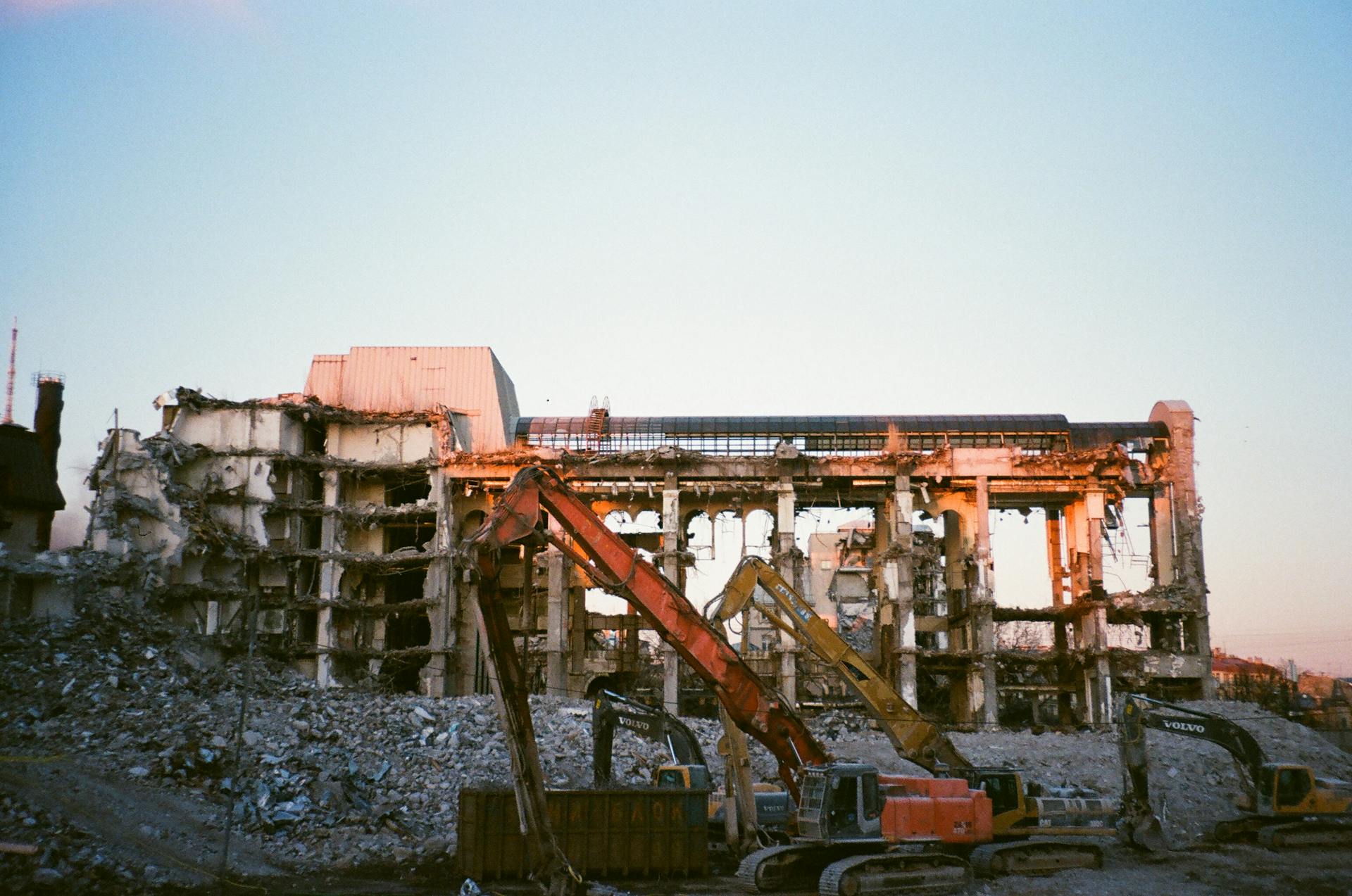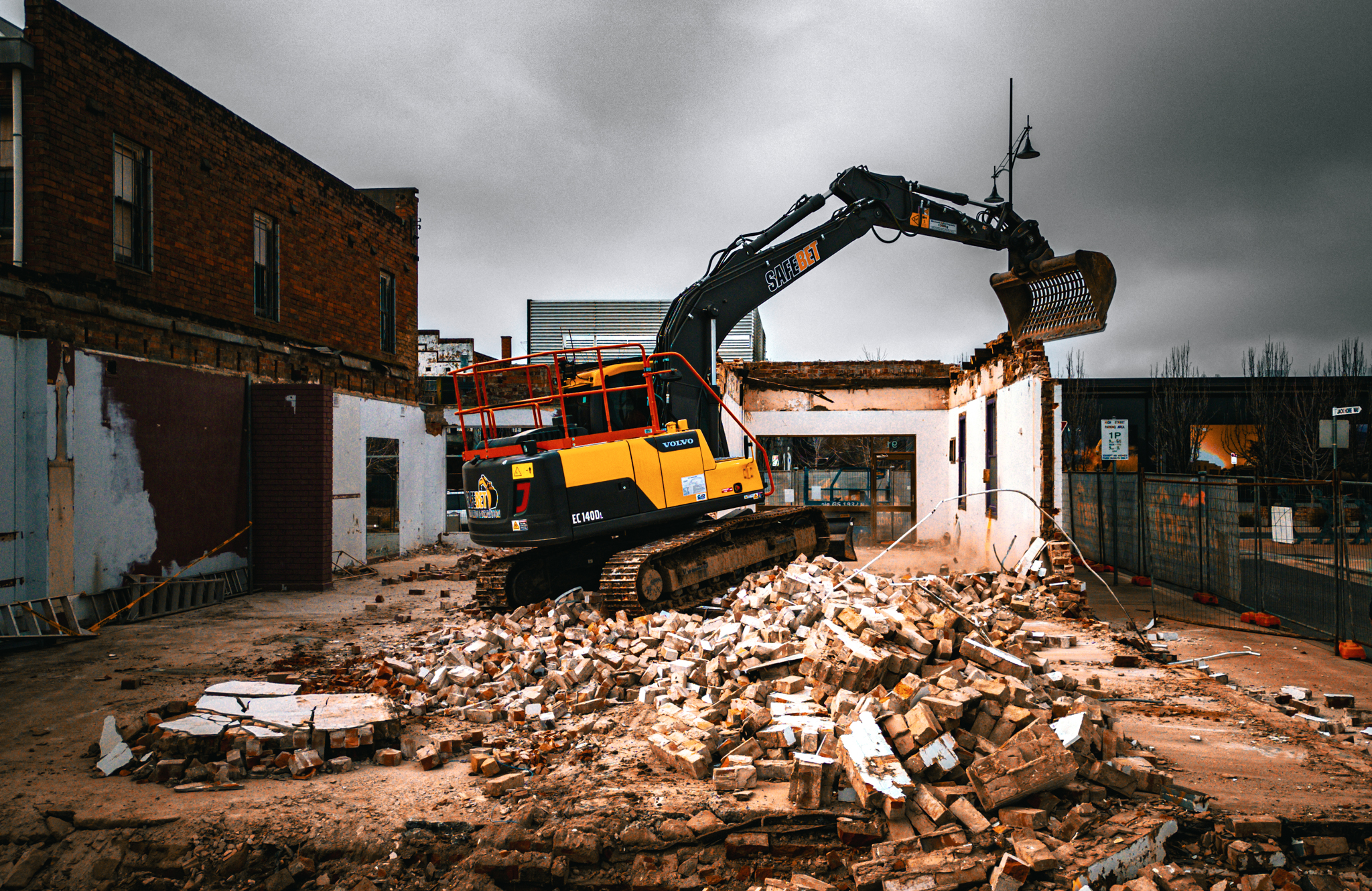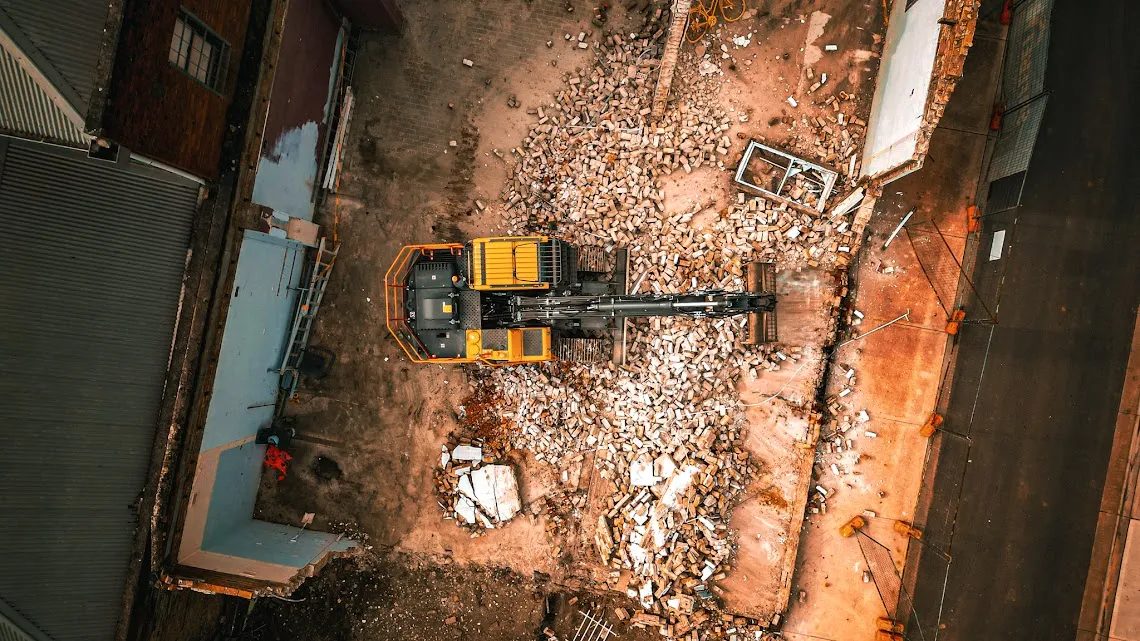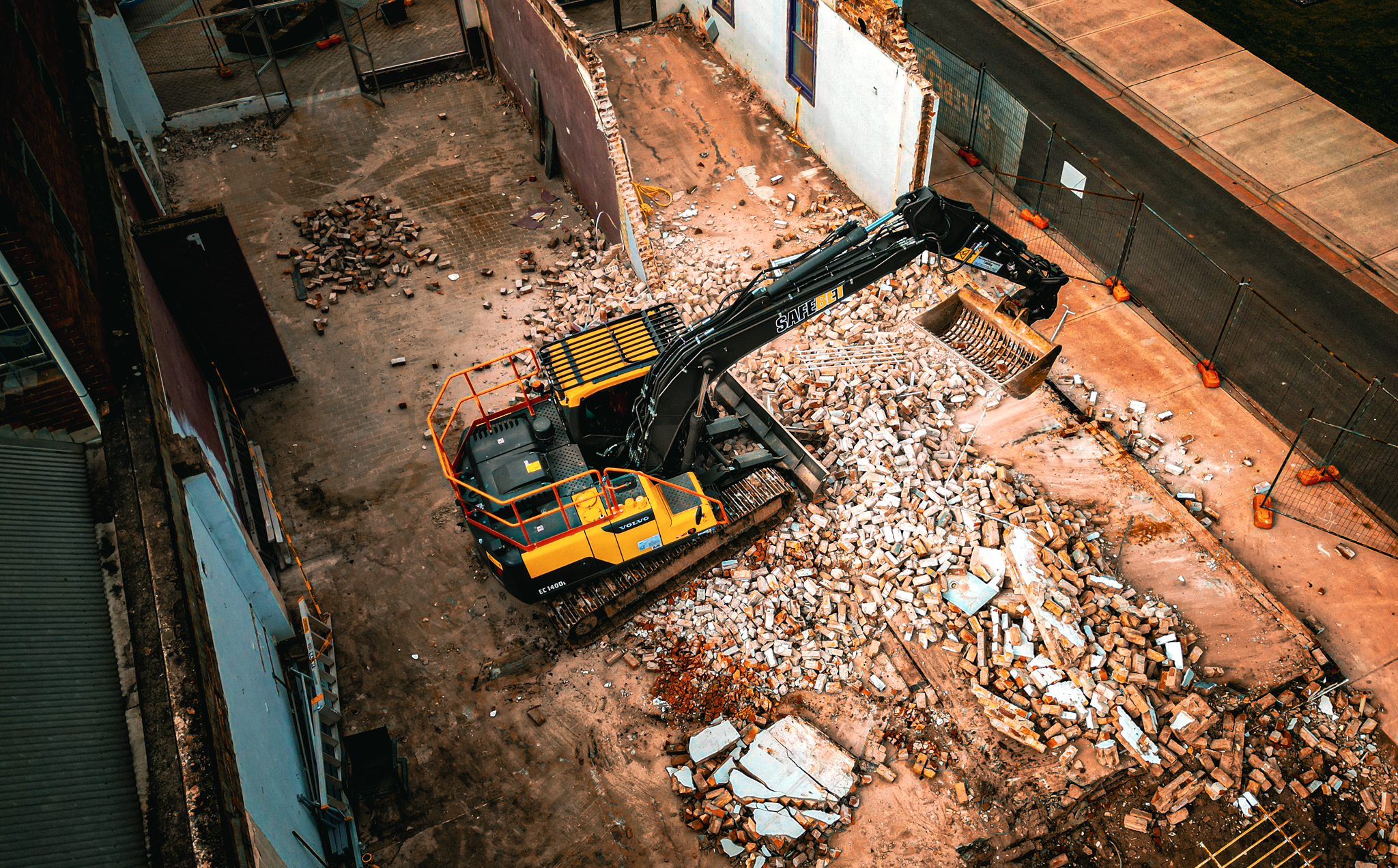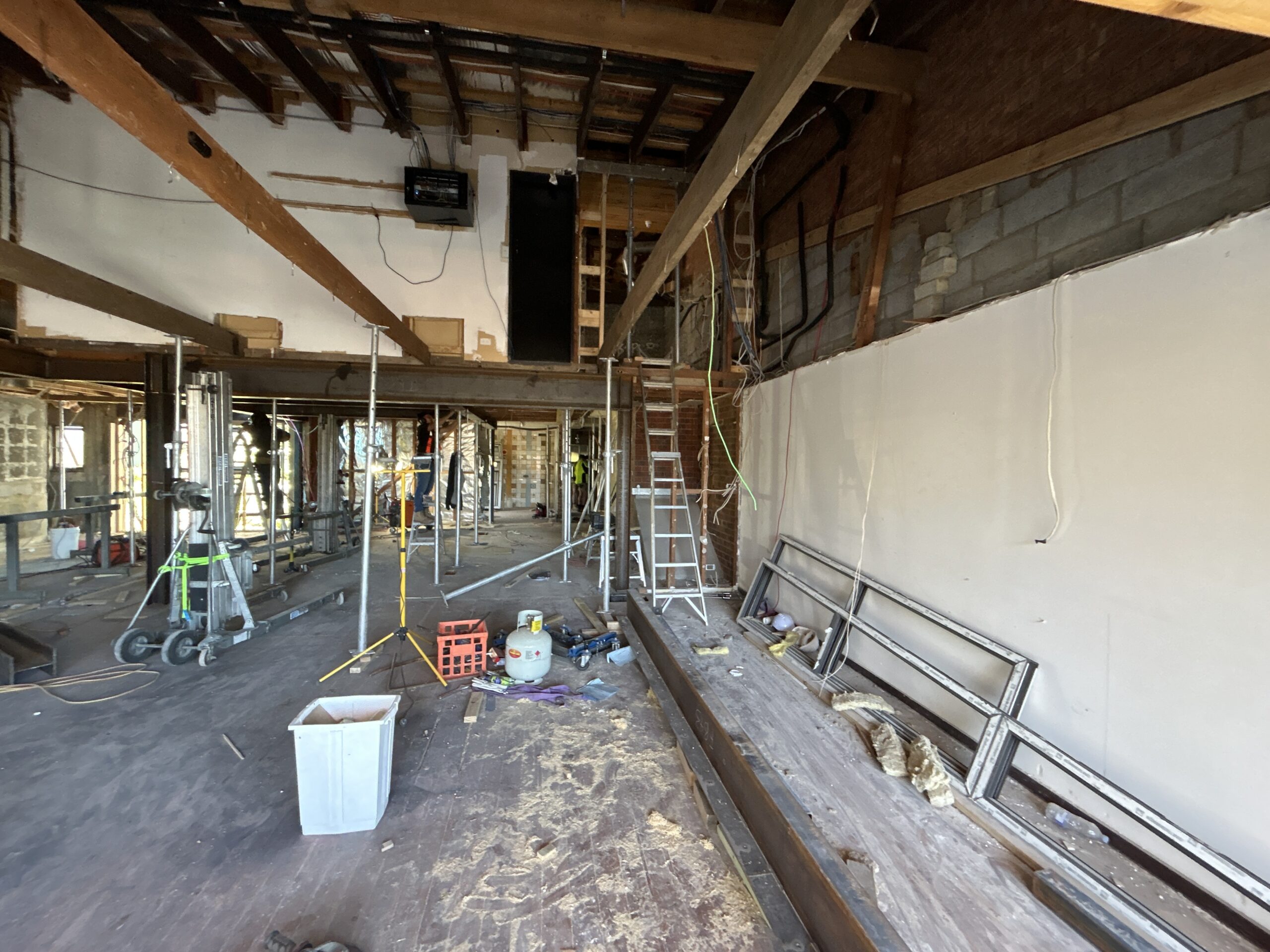At a glance
- Commercial demolition is a systematic process for dismantling structures, paving the way for new construction or repurposing, and requiring precision, safety, and industry expertise.
- Recognise full and partial demolition methods, including interior and selective demolition, each tailored to specific needs, with factors like cost and preservation influencing the choice.
- Acknowledge the crucial steps in a demolition project, from acquiring permits to debris removal, emphasising safety, proper planning, and adherence to regulations for a successful and sustainable outcome.
The landscape of commercial development is ever-evolving, and sometimes, the need for progress requires us to make way for new beginnings. Commercial demolition plays a crucial role in this process, ensuring the efficient removal of structures to make room for innovative developments.
In this comprehensive guide, we’ll delve into the intricacies of commercial demolition, focusing on the steps involved, different types, and the critical factor that often concerns businesses – the commercial demolition cost.
What is Commercial Demolition?
Commercial demolition is the systematic process of dismantling or destroying structures such as office buildings, shopping centres, hotels, and other commercial properties. Commercial demolition is of a larger scale compared to residential demolition; it requires bigger machinery and even explosives.
It paves the way for new construction or repurposing of the structure or even the land. Industry professionals perform demolition activities, and it is a carefully orchestrated operation that demands precision, safety, and adherence to regulatory guidelines.
Different Types of Demolition
Before initiating a commercial demolition project, it’s essential to understand the various types available. Commercial demolition ranges from complete demolition of a commercial property to just revamping the interiors of that property. In Australia, several demolition methods cater to different needs.
Full Demolition
This involves the complete removal of a structure, leaving no remnants behind. Full demolition is often chosen for sites requiring a clean slate for new construction. Full construction is costly compared to other types of commercial demolition, as it involves complete destruction of the property.
Partial Demolition
Partial demolition of commercial property means destroying a selected section of the property. Sometimes, you may only need to revamp a floor or a section of the building so the whole property is just as you need.
This method targets specific sections of a structure, preserving the remaining areas. It’s a more nuanced approach suitable for projects where only certain portions need replacement or refurbishment. Partial demolition of commercial properties can involve the following:
Interior Demolition
Interior demolition of a commercial property is practised to provide the existing structure with suitable interiors that suit your needs or taste. In this type of demolition, the exterior of the property remains as it is, while the interiors are changed as per clients’ requirements. Focused on the removal of interior components, this type of demolition is common in commercial settings where redesign or renovation is necessary.
Selective Demolition
In selective demolition, just a portion of commercial properties is demolished. This type of commercial demolition is suitable when some parts of a building are in good shape, fit your needs, or may have aesthetic value, while some sections may require improvement. Selective demolition involves the careful removal of specific elements while preserving others.
Steps Involved in a Demolition Project
Acquiring the Necessary Permit
Before any demolition activity begins, obtaining the required permits is paramount. Local authorities in Sydney and Melbourne have specific regulations governing demolition projects, and adherence to these guidelines is mandatory. Commercial demolition services in Sydney and Melbourne often assist in this regard.
Clear Out the Building
While demolishing an existing building or a section of it, it is important to clear the building or the section to make the process seamless. So, the initial phase involves removing all materials and belongings from the structure. This includes furniture, fixtures, and any hazardous materials that could pose a risk during the demolition process.
Prioritise Safety Measures
Safety is of utmost importance in a demolition project. This involves erecting barriers, installing safety signage, and ensuring that all personnel are equipped with the necessary protective gear. Professional commercial demolition services prioritise safety to prevent accidents and ensure a smooth operation.
Begin Demolition
With safety measures in place, the actual demolition process can commence. This may involve the use of heavy machinery, explosives (in controlled environments), or a combination of methods, depending on the project requirements.
Debris Removal
Post-demolition, the site is cleared of debris and rubble. This phase involves the proper disposal of waste materials in accordance with environmental regulations. Some materials may be recycled, contributing to sustainable demolition practices.
How Much Does Commercial Demolition Cost?
Understanding the cost implications of a commercial demolition project is crucial for businesses planning such endeavours. The commercial demolition cost can vary based on several factors:
Size of the Structure
Larger structures require more time, resources, and equipment for demolition, impacting the overall cost. The commercial demolition cost per square foot is often used as a metric for estimating expenses.
Demolition Method
The chosen demolition method influences costs. Full demolitions may be more expensive than partial or selective demolitions due to the extent of the work involved.
Site Accessibility
Easy access to the site facilitates smoother operations and may reduce costs. Limited access, on the other hand, might require specialised equipment, impacting the budget.
Waste Disposal
Proper disposal of debris is a cost factor. Recycling materials can mitigate expenses, but hazardous waste removal may incur additional costs.
Location
The geographical location of the project site also affects costs. Commercial demolition services in Sydney and Melbourne may have different pricing structures based on local regulations, labour costs, and market demand.
While it’s challenging to provide a specific figure without project-specific details, businesses are encouraged to consult with reputable commercial demolition services for accurate cost estimates tailored to their needs.
A commercial demolition project requires careful planning, adherence to regulations, and a clear understanding of the associated costs. Whether it’s a full-scale demolition or a selective deconstruction, prioritising safety and environmental considerations is paramount. As businesses in NSW and VIC continue to evolve, commercial demolition services play a crucial role in shaping the urban landscape.
Proper research, collaboration with experienced professionals, and a commitment to safety are key elements in ensuring the success of any commercial demolition endeavour. Stay tuned for our upcoming articles, where we’ll delve deeper into the permitting process and a detailed breakdown of commercial demolition costs. As the industry advances, so too must our understanding of its intricacies for a more sustainable and progressive future.
